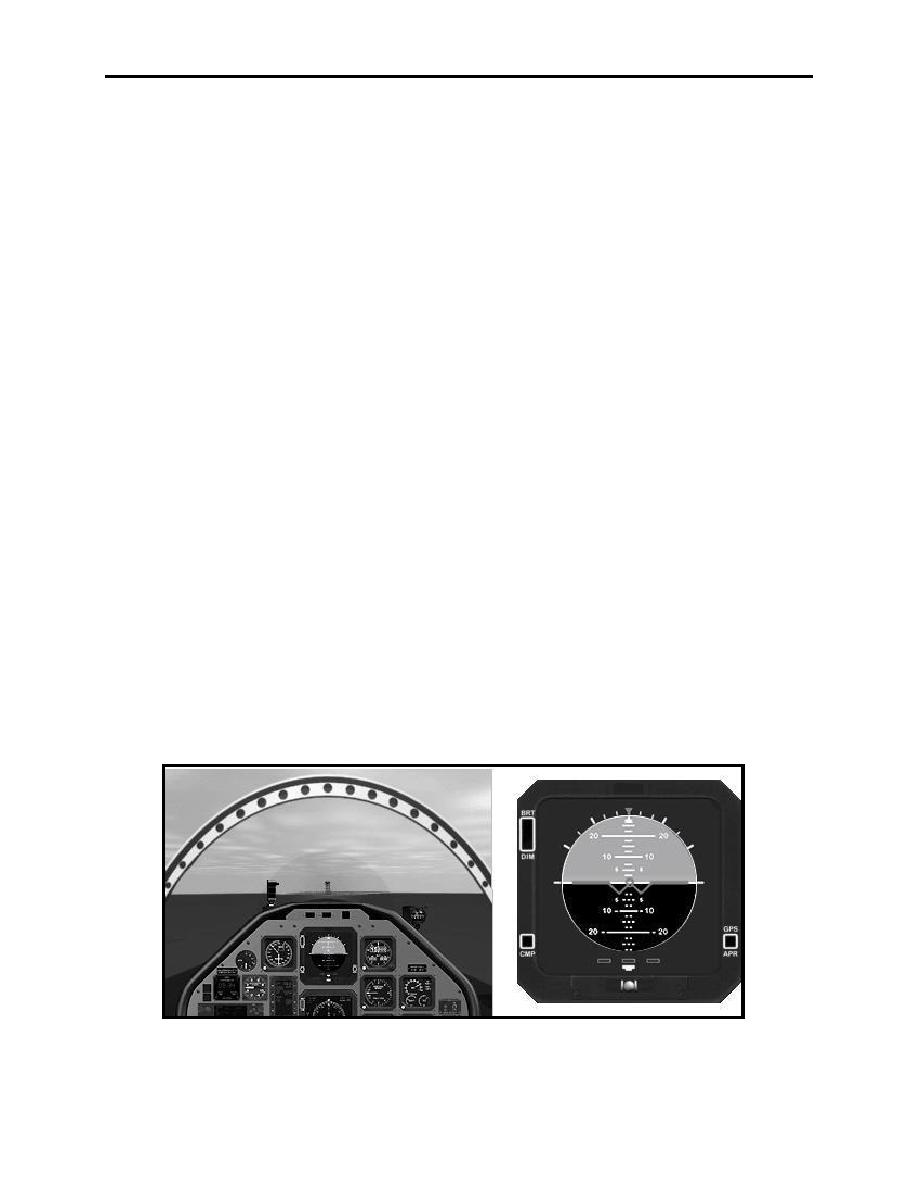 |
|||
|
|
|||
|
|
|||
| ||||||||||
|
|  CHAPTER FIVE
T-6A CONTACT
508.
DEPARTURE
After reporting "Gear up, flaps up." and at least 400 feet AGL, turn to your departure heading
and contact departure on the frequency assigned in your clearance. Fly the VFR departure to
Area 1 or the IFR departure to the MOA in accordance with the In-flight Guide and local course
rules. Be vigilant for traffic in the local area.
If VFR, once clear of Class C airspace make the appropriate radio call. Squawk 1200, as
directed, and switch to the appropriate radio frequency.
509.
STRAIGHT AND LEVEL FLIGHT
Using the horizon as the primary reference, you will learn to accomplish one of the most basic of
flight maneuvers, straight and level flight. In order to fly good straight and level, you must
maintain a good scan, efficiently interpret deviations, and continually make minor control
adjustments. Properly trimming off control pressures will dramatically aid your straight and
level flight performance.
The pitch attitude for level flight (constant altitude) is usually obtained by selecting some portion
of the aircraft's nose as a reference point and keeping the point in a fixed position relative to the
horizon. In the T-6A the horizon should intercept the canopy approximately one-half of the way
up the windscreen for normal cruise (Figure 5-3). This position should be crosschecked
occasionally against the altimeter and VSI to determine whether or not the pitch attitude is
correct.
To fly a constant heading, select one or more outside visual reference points far ahead of the
aircraft such as fields, towns, lakes, distant clouds, etc. Keep the aircraft headed towards the
reference point regardless of the aircraft's crab along the way. Roads and section lines on the
ground also offer excellent references; straight flight can be maintained by flying parallel or
perpendicular to them. While using these references, periodically crosscheck the EHSI to
determine if the aircraft is maintaining the proper heading.
Figure 5-3 Visual and EADI Representations of Straight and Level Flight
5-6
FLIGHT PROCEDURES
|
|
Privacy Statement - Press Release - Copyright Information. - Contact Us |